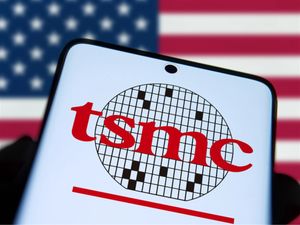Financial News
ICE Mortgage Monitor: Affordability and Demand Continue to Suffer As Rates Hit 23-Year High; Lendable Equity Nearing Record Levels, Yet Borrower Retention Worst in 17 Years
- Rising rates and home prices have pushed the principal and interest (P&I) payment needed to purchase the median-priced home up $144 per month over the past 30 days to more than $2,500 for the first time
- It now takes 40.6% of the median household income to cover monthly P&I – after averaging less than 25% over the past 35 years – making for the least affordable housing market since 1984
- As a result, purchase-mortgage applications fell to 47% below pre-pandemic levels the week of Oct. 26 – the weakest they’ve been since rates began to rise
- Further, annual home price growth continued to accelerate to +4.3% in September, though the monthly gain (+0.39%) was the weakest since January and a marked downshift from August’s revised +0.61%
- However, with rates above 7.5%, affordability is at a 39-year low and purchase applications are waning; given these conditions it’s fair to expect prices to weaken later in 2023
- Rising prices have brought mortgage-holder equity to within 2% of last year’s record highs in Q3 at $16.4T, $10.6T of which is available for homeowners to borrow against while keeping a 20% equity stake in the home
- The bulk of refinance activity is equity driven, but retention of consumers post-refi is at its lowest in 17 years, due to an inability to identify and effectively market to those most likely to transact in this market
Intercontinental Exchange, Inc. (NYSE: ICE), a leading global provider of data, technology, and market infrastructure, released its November 2023 ICE Mortgage Monitor Report, based on the company’s industry-leading mortgage, real estate and public records data sets. Interest rates continue to put significant pressure on affordability, which in turn is affecting homebuyer and borrower demand. As ICE Vice President of Enterprise Research Andy Walden explains, October was a particularly challenging month for prospective homebuyers from an interest rate perspective.
“For all but a single day, interest rates spent the entire month of October above 7.5%, topping out at 7.80% on Oct. 25, according to our ICE U.S. Conforming 30-Year Fixed Mortgage Rate Lock Index,” said Walden. “Mortgage rates haven’t been that high in 23 years, which continues to hammer affordability. The situation was already dire, but recent weeks have seen rates climb to where it now takes nearly 41% of the median monthly income just to make the P&I payment needed to purchase the median-priced home. That payment has risen by $144 over the past 30 days and now sits above $2,500 a month for the first time in history. Keep in mind, that record-high payment doesn’t include taxes, insurance or any HOA fees that may be part of the homeowner’s monthly expenses. For the last 35 years, the share of income needed to cover P&I has averaged below 25%. Affordability pressure is not coming from interest rates alone, though. The last time affordability was this bad in the 80s, rates were in the double digits and the average home was about 3.5 times median income, in stark contrast to today’s price-to-income ratio of nearly 6-to-1.
“Historically tight inventory levels have been further bolstering prices, which hit yet another all-time high in September, with the annual growth rate accelerating to 4.3% from effectively flat just four months before. That said, the pace of monthly gains slowed to +0.39% in September, marking the smallest seasonally adjusted gain since January. Rates are up 75 basis points from when September’s closed sales went under contract, which has cut consumer buying power by another 8% in the time since. Now, with rates above 7.5% and affordability at a 39-year low, it’s fair to expect prices to weaken later in 2023.”
To that end, consumer demand is already showing further signs of stress. Purchase-mortgage applications ran 47% below pre-pandemic levels the week of Oct. 26 – the weakest they’ve been since rates began to rise last year. Though purchase lending should remain lenders’ primary focus given its driven more than 85% of all volume in recent months, Walden noted that recent refinance activity has been primarily equity-driven cash-out transactions.
“The rate/term refinance market is essentially non-existent today,” Walden said. “In fact, the refinance market in general is but a shadow of what it once was. There are pockets of cash-out lending occurring among a particular set of borrowers, but even that has been a niche market. Given that homeowner equity has risen alongside home prices and is now within 2% of the peaks we saw in 2022, it makes sense that cash-outs would still appeal to some borrowers. Together, U.S. mortgage holders have some $16.4T of equity in their homes. Of that total, $10.6T is what we refer to as ‘tappable equity,’ meaning the amount a homeowner could borrow against while keeping at least a 20% equity stake in their property. Unfortunately, with borrower retention at a 17-year low, lenders are losing customers seeking to tap equity via cash-outs. What’s notable is that they are losing this business not due to their rate offerings, but rather an inability to identify and market to those borrowers likely to transact in today's market.”
Much more information on these and other topics can be found in this month’s Mortgage Monitor.
About the Mortgage Monitor
ICE Mortgage Technology manages the nation's leading repository of loan-level residential mortgage data and performance information covering the majority of the overall market, including tens of millions of loans across the spectrum of credit products and more than 160 million historical records. The combined insight of the ICE Home Price Index and Collateral Analytics’ real estate data provides one of the most complete, accurate and timely measures of home prices available, covering 95% of U.S. residential properties down to the ZIP-code level. In addition, the company maintains one of the most robust public property records databases available, covering 99.99% of the U.S. population and households from more than 3,100 counties.
ICE's research experts carefully analyze this data to produce a summary supplemented by dozens of charts and graphs that reflect trend and point-in-time observations for the monthly Mortgage Monitor Report. To review the full report, visit: https://www.blackknightinc.com/data-reports/
About Intercontinental Exchange
Intercontinental Exchange, Inc. (NYSE: ICE) is a Fortune 500 company that designs, builds and operates digital networks to connect people to opportunity. We provide financial technology and data services across major asset classes that offer our customers access to mission-critical workflow tools that increase transparency and operational efficiencies. We operate exchanges, including the New York Stock Exchange, and clearing houses that help people invest, raise capital and manage risk across multiple asset classes. Our comprehensive fixed income data services and execution capabilities provide information, analytics and platforms that help our customers capitalize on opportunities and operate more efficiently. At ICE Mortgage Technology, we are transforming and digitizing the U.S. residential mortgage process, from consumer engagement through loan registration. Together, we transform, streamline and automate industries to connect our customers to opportunity.
Trademarks of ICE and/or its affiliates include Intercontinental Exchange, ICE, ICE block design, NYSE and New York Stock Exchange. Information regarding additional trademarks and intellectual property rights of Intercontinental Exchange, Inc. and/or its affiliates is located here. Key Information Documents for certain products covered by the EU Packaged Retail and Insurance-based Investment Products Regulation can be accessed on the relevant exchange website under the heading “Key Information Documents (KIDS).”
Safe Harbor Statement under the Private Securities Litigation Reform Act of 1995 -- Statements in this press release regarding ICE's business that are not historical facts are "forward-looking statements" that involve risks and uncertainties. For a discussion of additional risks and uncertainties, which could cause actual results to differ from those contained in the forward-looking statements, see ICE's Securities and Exchange Commission (SEC) filings, including, but not limited to, the risk factors in ICE's Annual Report on Form 10-K for the year ended December 31, 2022, as filed with the SEC on February 2, 2023.
Category: ICE Mortgage Technology
ICE-CORP
Source: Intercontinental Exchange
View source version on businesswire.com: https://www.businesswire.com/news/home/20231106923488/en/
U.S. mortgage holders have $16.4T of equity in their homes. Of that, $10.6T is ‘tappable’ – equity a homeowner could borrow against while still retaining 20% equity in their property. The average mortgage holder now has $200K in tappable equity.
Contacts
ICE Media Contact
Mitch Cohen
mitch.cohen@bkfs.com
+1 704-890-8158
ICE Investor Contact:
Katia Gonzalez
katia.gonzalez@ice.com
+1 (678) 981-3882
More News
View More
Quotes delayed at least 20 minutes.
By accessing this page, you agree to the following
Privacy Policy and Terms Of Service.








